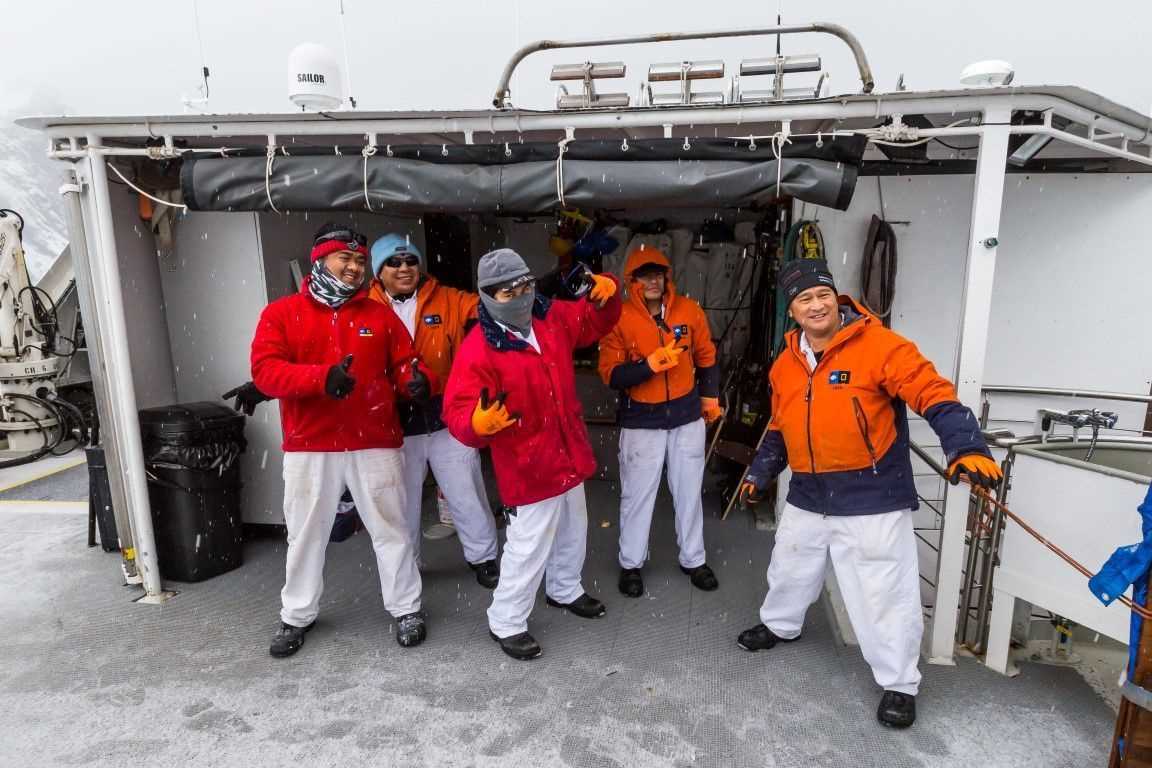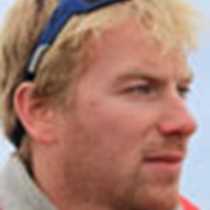After three days at sea with no land in sight, it seemed pretty exciting to finally see land on the horizon, albeit a fairly small stretch of land. This was Elephant Island, famous for the Shackleton survival story where most of Ernest Shackleton’s men hauled their boats onto a small spit of land, upturned them and then stayed there four and a half months whilst “the Boss” sailed to South Georgia in a Lifeboat. What we see now of the site they sheltered (Point Wild) has changed a little, with the glacier having receded further and the beach they raised their boats having been eroded away so it is now a very thin spit of land. The location of their site is now marked by a bust of the Chilean officer who took his ship “Yelcho” down south to try to rescue the men.
Captain Martin also sailed the ship close to the glacier, so we could get a very very good look at it towering over us!
Then it was time to sail back out to sea. But not before whales were spotted - lots of Fin whales, distinguished by their enormous blows. We slowed down so everyone could have a good look of them. Ella was very excited!
After this, it was Erik Guth’s turn to talk about the story of Shackleton, helping give meaning to the barren place we visited this morning. And then the ship was heading straight towards an iceberg! … 20 miles away. Our ship iceberg encounter was incredible, an iceberg 30 nautical miles long was drifting close to Elephant Island and had shown up on our ice charts, so the captain and Lucho thought it’d be worth checking out, and it definitely was. It was a really spectacular tabular iceberg with sheer sides and perhaps 100ft tall (out of the water). That very iceberg has been floating in the Southern Ocean for over 31 years.
Later in the afternoon, Ella gave a presentation on killer whales of the Southern Ocean, describing the differences between the species found here and the reason for their speciation.







